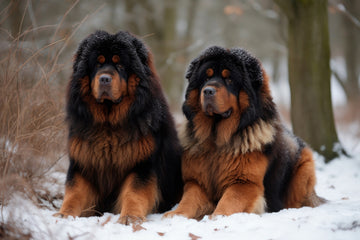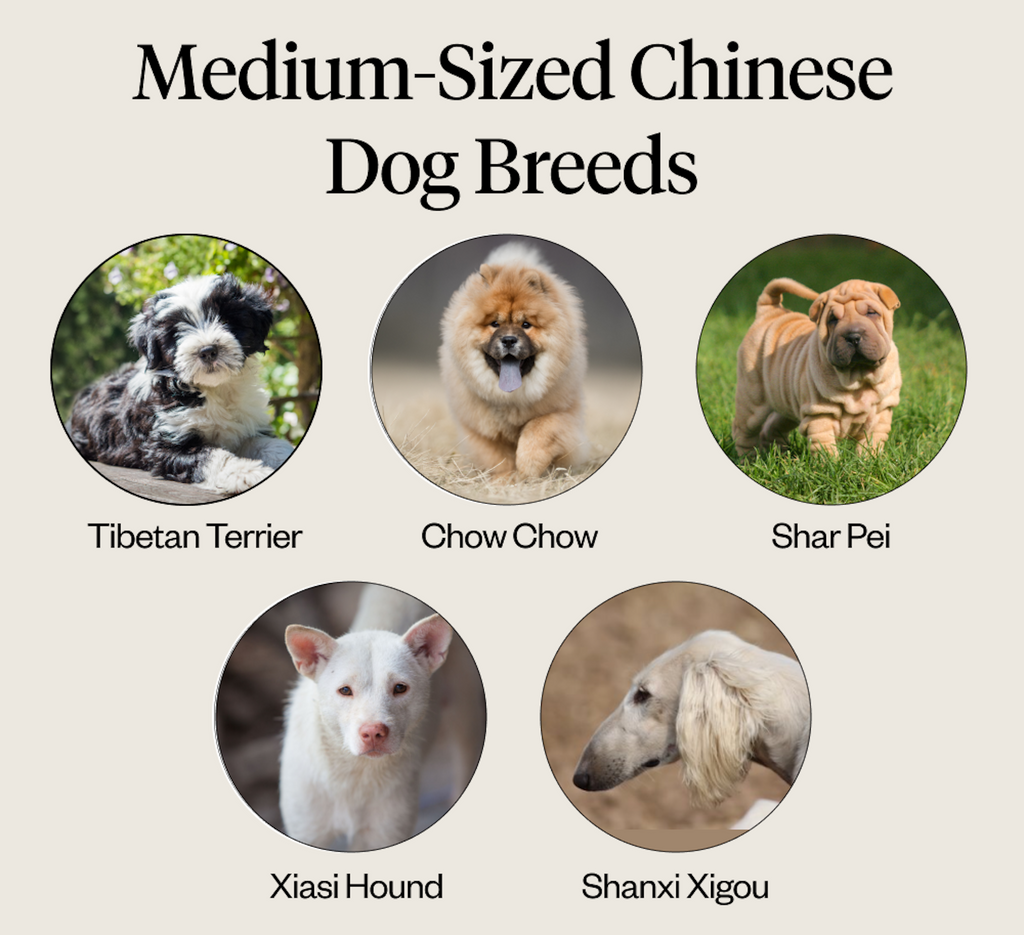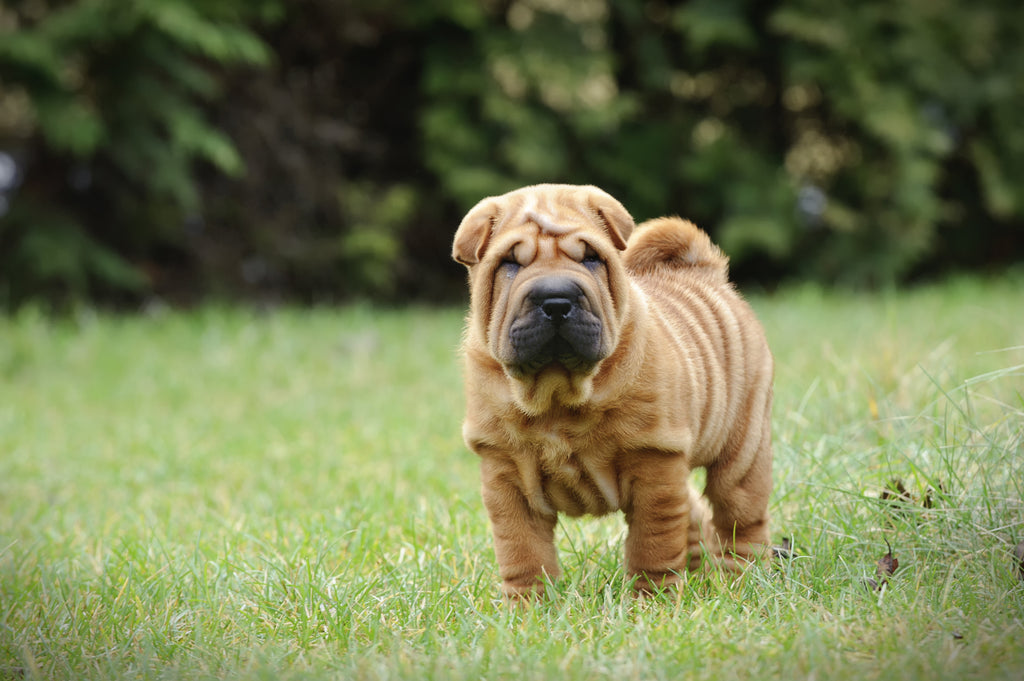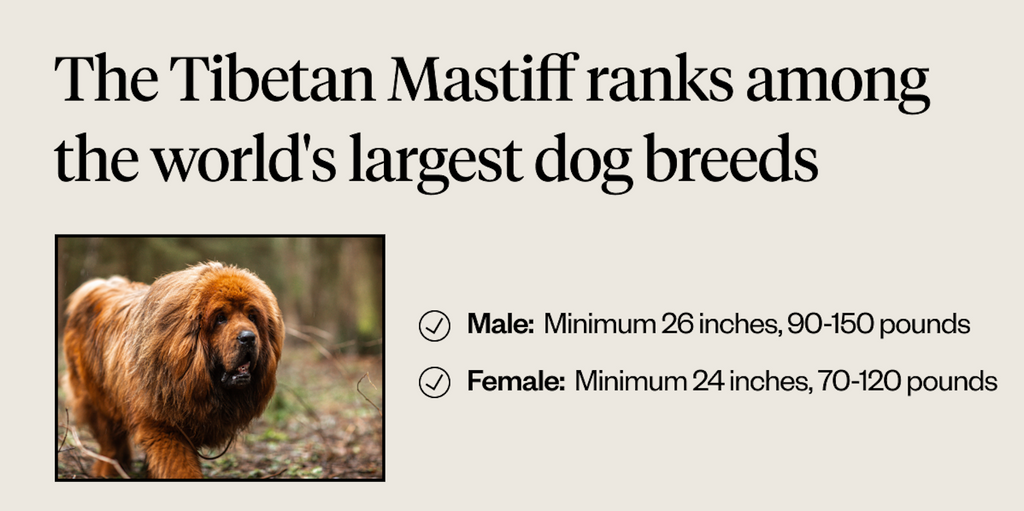10 Min Read
Types Of Chinese Dog Breeds
Key takeaway

Why pet owners are switching to online vet care with Dutch
-
Prescriptions delivered free to you
-
Fast access to Licensed Vets over video
-
Unlimited video visits and follow-ups
Adopting a new dog as part of your family is far from a simple decision. Given the lifelong commitment that they require, it's crucial to select a breed that fits your lifestyle, location, and needs.
When exploring Chinese dog breeds, you'll discover a variety of options that are particularly well-suited for companionship. Whether you're interested in participating in dog shows, going on hunting trips, or simply having a loyal friend by your side, you'll find a breed that matches your preferences.
From smaller dogs that thrive in apartment settings to larger ones that excel in open spaces, learning about the various Chinese dog breeds available can help you once it's time to adopt a pup of your own.
- History Of Chinese Dog Breeds
- Pekingese
- Shih Tzu
- Chinese Crested
- Lhasa Apso
- Pug
- Tibetan Spaniel
- Tibetan Terrier
- Chow Chow
- Shar Pei
- Xiasi Dog
- Shanxi Xigou
- Tibetan Mastiff
- Final Notes
History Of Chinese Dog Breeds
Dogs have a rich and ancient history in China, dating back thousands of years. In Chinese culture, dogs were valued for their various roles, ranging from hunting and herding to guarding and companionship. Different breeds emerged to suit specific tasks and environments. The Chinese Imperial Court also played a significant role in shaping dog breeds, favoring small and ornamental dogs that became symbols of status and luxury.1
Throughout history, dogs held diverse cultural significance in China, often appearing in art, literature, and religious practices. The arrival of Western influences introduced new breeds, leading to crossbreeding and the evolution of Chinese dog breeds. Today, these breeds continue to reflect China's diverse geography and cultural heritage, ranging from the regal Chow Chow to the spirited Shih Tzu, showcasing the enduring connection between dogs and Chinese society.1
Now, let’s take a look at some of the most popular Chinese dog breeds, from small Chinese dogs like the Pekingnese to large Chinese dogs such as the Tibetan mastiff.

Pekingese
The Pekingese stands out as one of China's most ancient dog breeds, steeped in a history of royalty. Originally bred to cater to the elite class, these dogs are distinguished by their iconic lion's mane appearance and their endearing loyalty. Typically, a mature Pekingese reaches a weight of around 14 pounds and stands at a height of 6 to 9 inches. Their life expectancy spans roughly 12 to 14 years, a range influenced by genetics and lifestyle factors.
What truly captures attention is the Pekingese's luxurious, long coat — a feature that sets them apart from other breeds. Besides being celebrated among China's small dog breeds, Pekingese dogs are known for their strong independence and distinct personalities.2
Shih Tzu
The Shih Tzu is another beloved breed that hails from China. Nurtured through the blending of Tibetan breeding stocks, Shih Tzus likely emerged from a cross between the Lhasa Apso and Pekingese breeds — both Sino-Tibetan breeds with roots reaching back at least 1,000 years. However, this breed remained confined within the walls of Chinese royalty, only making its worldwide debut in the 1930s.
A fully grown Shih Tzu typically stands between 8 and 11 inches in height and weighs in at 9 to 16 pounds. Their trademark lush coats contribute to their allure, and most effortlessly establish rapport with both children and adults. With proper care and favorable genetics, the Shih Tzu's life span ranges from 10 to 18 years on average. Noteworthy for their playful and loyal nature, Shih Tzus excel as affectionate lap dogs, especially appealing to those captivated by the charm of Chinese small dog breeds.3
Chinese Crested
The Chinese Crested has captured the attention of many dog enthusiasts around the world with its distinctive appearance. Characterized by its nearly hairless body and a crest of silky hair on the head, this breed offers a striking contrast that sets it apart.
Originating in China, the breed's history traces back several centuries, with evidence of its existence in ancient artifacts and artworks. The Chinese Crested comes in two coat varieties: the hairless, with smooth skin and tufts of hair on certain areas, and the powderpuff, boasting a full coat of soft, fine hair all over. Despite their diverse looks, both varieties share the breed's charming and affectionate personality, making them engaging companions for households that appreciate their individuality.4
Lhasa Apso
The Lhasa Apso, recognized in China as an ancient lineage dating back a thousand years, finds its origins across diverse landscapes, spanning from the Himalayan mountains to revered Buddhist monasteries. Over centuries, this breed has been intricately linked to Buddhist customs and even the Dalai Lama. Its international recognition began to solidify in the 1940s, as the Lhasa Apso started gaining popularity and spreading beyond its native borders, eventually making its way to the United States.
Standing at approximately 10 to 11 inches in height, with females generally a tad smaller than fully grown males, the Lhasa Apso exudes a unique charm. Upon reaching full maturity, these dogs typically weigh between 12 and 18 pounds.5
Pug
The term 'pug' originates from the Latin phrase 'multum in parvo', which aptly translates to 'a lot in a little'. This name perfectly encapsulates the breed's essence, as pugs are celebrated for their inquisitive nature, playful spirit, and above all, their remarkable capacity to bring joy to those around them. In fact, in times past, pugs held a reputation for their playful antics and were favored companions among various Chinese emperors.
Pugs showcase their fine and smooth coats in two distinct colors: black and fawn. Often, they sport a black face mask to complete their ensemble. Overall, their signature traits include a petite build and endearing, flat faces. Upon reaching full maturity, pugs typically stand between 10 and 13 inches tall and tip the scales at around 14 to 18 pounds. With proper care, these affectionate companions can anticipate a lifespan of 13 to 15 years.6
Tibetan Spaniel

True to its name, the Tibetan spaniel finds its roots amid the expansive plateaus and towering mountains of Tibet. These remarkable dogs shared their lives with monks in monasteries and temples, playing dual roles as steadfast companions and dutiful watch dogs.
Despite their small stature, maxing out at just 10 inches, Tibetan spaniels are renowned for their agility and impressive ability to protect their loved ones. In terms of appearance, Tibetan Spaniels draw admiration for their unique pendant-like, well-feathered ears, which complement their silky double coats available in a variety of colors.7

Tibetan Terrier
The Tibetan terrier is a small breed known for its charming appearance and lively personality. Despite its name, it's not a true terrier, but rather a member of the herding group. Similar to Tibetan terriers, these dogs were historically kept by Tibetan monks as companions, watchdogs, and herders in the Himalayan mountains. They are even known as “the holy dogs of Tibet.”
Tibetan terriers have a distinctive double coat that comes in a variety of colors and patterns. Their long, thick hair requires regular grooming to prevent matting. They are intelligent, affectionate, and often exhibit a playful nature, making them great companions for families and individuals alike. Additionally, their agility and endurance make them well-suited for various dog sports and activities. While they may have an independent streak, they tend to form strong bonds with their human families.8
Chow Chow
The Chow Chow is a unique and regal breed known for its lion-like mane and distinctive blue-black tongue. Originating from China, this breed has a history that dates back thousands of years, where it was used for hunting, guarding, and even pulling carts.
Chow Chows are medium-sized dogs with a sturdy build and a characteristic scowling expression. One of the Chow Chow's most notable traits is its strong-willed and independent nature. While they can be loyal and affectionate with their families, they often exhibit a reserved demeanor around strangers. Early socialization and training are essential to help them become well-rounded companions.9
Shar Pei

The Shar Pei, another cherished Chinese dog breed, gets its name from the term "sand skin" in Chinese, which perfectly describes its unique coat. This breed stands out with its short, bristly coat that feels rough to the touch. Adding to its distinctive look, Shar Peis also sport adorable wrinkles that adorn their bodies. These wrinkles are most pronounced during their puppy days but tend to smoothen out as they grow into adulthood.
Yet, the Shar Pei is more than just its appearance. These dogs have a special set of traits that make them stand apart. Balancing loyalty with independence, they often form deep connections with their families and are naturally protective. When meeting strangers, they usually maintain a reserved and distant manner, but with their loved ones, their affectionate and caring side shines through.10
Xiasi Dog
The Xiasi dog originates from the mountainous regions of China. Revered for its unwavering loyalty and exceptional guarding instincts, the Xiasi dog has long been a trusted companion to rural families and livestock farmers.
This breed's distinctive appearance is characterized by a sturdy frame, well-muscled body, and a thick double coat that provides insulation against the harsh weather of its native terrain. Renowned for its intelligence and versatility, the Xiasi dog not only excels in safeguarding properties and herds from predators but also forms deep bonds with its human family, making it a devoted and protective household pet.
Unfortunately, the Xiasi dog's population has faced decline throughout the years due to modernization and shifts in agricultural practices. However, efforts by dedicated breed enthusiasts and conservationists have led to increased awareness and preservation of this valuable breed.11
Shanxi Xigou
The Shanxi Xigou comes from the Shanxi province of China. A medium-sized dog, this breed boasts a sturdy build and a thick coat that serves as protection against the region's varying climates. This protective coat often comes in a range of earthy tones, such as shades of brown, gray, and black, allowing the Shanxi Xigou to blend seamlessly into its natural surroundings during its working duties.
Traditionally bred for hunting, herding, and guarding tasks, the Shanxi Xigou showcases its innate intelligence and adaptability in various roles. Its history is deeply intertwined with the rural lifestyle of the Shanxi province, where its reliability as a working partner has been valued for generations.12
Tibetan Mastiff
The Tibetan mastiff, originating from the Himalayan region, is a majestic breed known for its imposing size and distinctive mane-like coat. With a history intertwined with Tibetan culture, it has long served as a loyal guardian of flocks and homes. This breed's impressive appearance, marked by its thick double coat and bushy tail, reflects its resilience against harsh mountain climates. Beyond its physical traits, the Tibetan mastiff possesses keen intelligence and a watchful disposition, making it both a great protector and a devoted companion.
When fully grown, the Tibetan mastiff reaches a height of 24 to 26 inches, differing between males and females. Female mastiffs usually weigh between 70 and 120 pounds, while males typically range from 90 to 150 pounds. Generally, this breed has a lifespan of 10 to 12 years.13

Final Notes
Whether you're curious about hypoallergenic dogs or shaggy breeds, find extensive info on these canine companions by reading Dutch’s blog.
Have more questions about Chinese dog breeds or the perfect breed for your lifestyle? Speak with a licensed Dutch vet. Get easy access to quality care, pet prescriptions delivered straight to your door, and unlimited follow-ups. Try Dutch today.
Share
References
-
“Dogs in Ancient China.” World History Encyclopedia, https://www.worldhistory.org/article/1327/dogs-in-ancient-china/.
-
“Pekingese Dog Breed Information.” American Kennel Club, www.akc.org/dog-breeds/pekingese/.
-
“Shih Tzu Dog Breed Information.” American Kennel Club, www.akc.org/dog-breeds/shih-tzu/.
-
“Chinese Crested Dog Breed Information.” American Kennel Club, www.akc.org/dog-breeds/chinese-crested/.
-
“Lhasa Apso Dog Breed Information.” American Kennel Club, www.akc.org/dog-breeds/lhasa-apso/.
-
“Pug Dog Breed Information.” American Kennel Club, www.akc.org/dog-breeds/pug/.
-
“Tibetan Spaniel Dog Breed Information.” American Kennel Club, www.akc.org/dog-breeds/tibetan-spaniel/.
-
“Tibetan Terrier Dog Breed Information.” American Kennel Club, www.akc.org/dog-breeds/tibetan-terrier/.
-
“Chow Chow Dog Breed Information.” American Kennel Club, www.akc.org/dog-breeds/chow-chow/.
-
“Shar Pei Dog Breed Information.” American Kennel Club, www.akc.org/dog-breeds/shar-pei/.
-
“Xiasi Hound.” Wisdom Panel, https://www.wisdompanel.com/en-us/dog-breeds/xiasi-hound.
-
“Shanxi Xigou.” Wisdom Panel, https://www.wisdompanel.com/en-us/dog-breeds/shanxi-xigou.
-
“Tibetan Mastiff Dog Breed Information.” American Kennel Club, www.akc.org/dog-breeds/tibetan-mastiff/.

